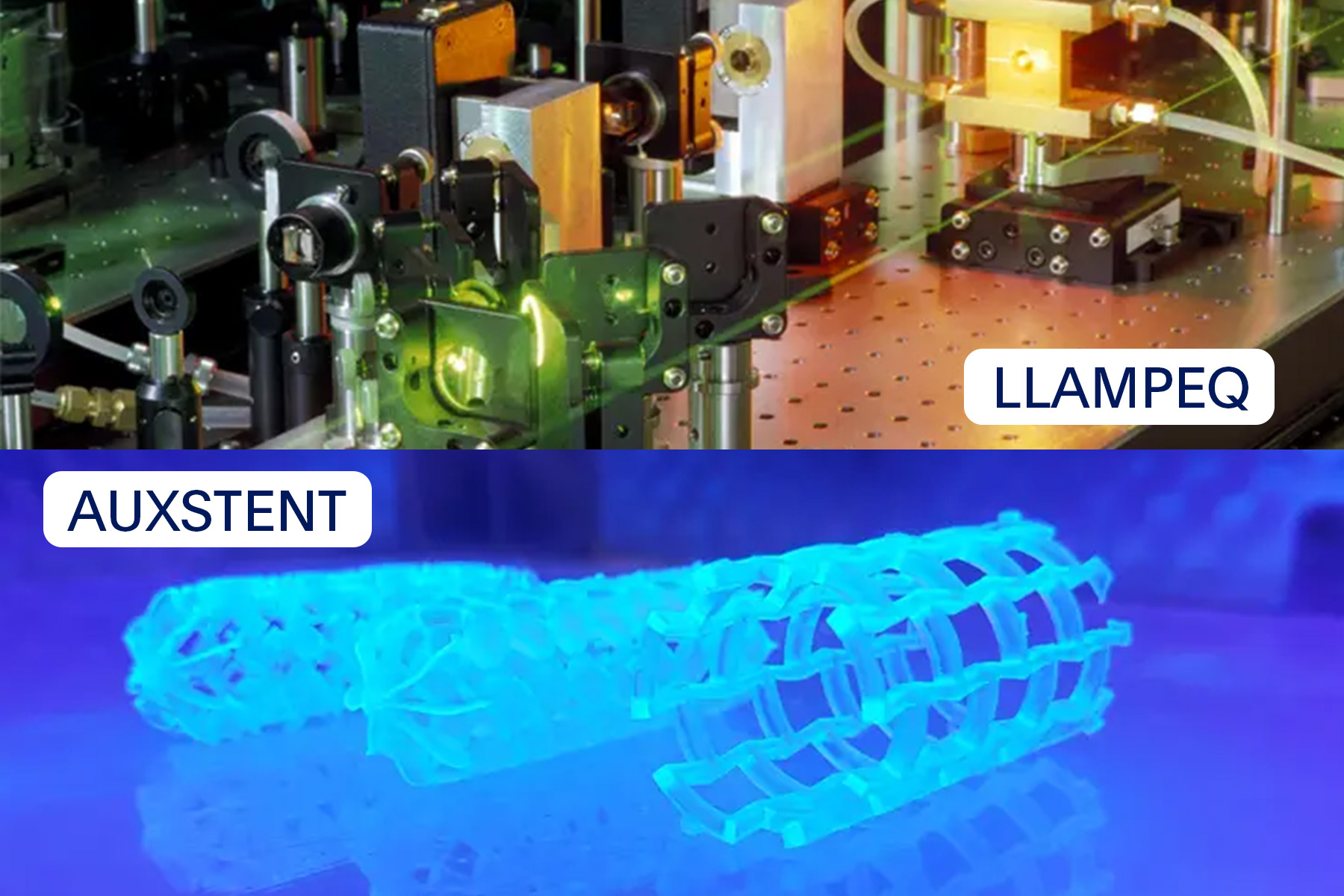LLAMPEQ (Development of a low-cost laser spectrophotometer) and AUXSTENT (Development of a stent to treat paediatric aortic coarctation) are two of the four IQS projects that have obtained funding from the Knowledge Industry Grants programme – LLAVOR modality awarded by the Agency for the Management of University and Research Grants (AGAUR) within the Government of Catalonia in the 2023 call. These grants are intended for innovative projects in the initial phase of the plan for transferring technology or knowledge with the potential to be incorporated into the productive sector and generate value in society. The objective of these grants is to finance the actions included in the plan to study and validate their technical and commercial viability and reach a sufficient degree of maturity that allows the proof-of-concept or service validation phase to offer guarantees.
The development of clean chemical technologies based on light is experiencing extraordinary support in response to climate change and the need to replace polluting processes based on fossil fuels with environmentally sustainable ones. The paradigmatic example is the conversion of solar energy into electricity and its storage in the form of solar fuels, such as green hydrogen, or the synthesis of ammonia, essential for the agri-food industry. The field of healthcare is also undergoing strong development thanks to photonic technologies such as diagnostic imaging, photopharmacology, and photomedicine.
A critical aspect for the success of these developments is the ability to have tools that make it possible to study chemical reactions initiated by light, which are usually ultra-fast and require highly specialized equipment. Existing commercial equipment is very expensive and necessitates highly specialized personnel to use it. This is similar to what happened some time ago with the first spectrophotometers, which are now routine instruments in the laboratories of a wide variety of companies.
In the AppLightChem research group at IQS, Dr Santi Nonell Marrugat and Dr Roger Bresolí Obach are leading the LLAMPEQ project, which aims to develop a low-cost laser spectrophotometer to study ultrafast photochemical processes. This prototype seeks to exceed the performance of commercial equipment, taking advantage of the latest technological advances in photonics and electronics, not to mention the research group’s experience in this area of knowledge.
Within this project, the functionality of the new equipment will be validated along with its technical and economic viability and ease of use.
Aortic coarctation is a congenital heart defect caused by the narrowing of the aortic artery. Treating it can consist of surgical repair, transcatheter balloon angioplasty, or the implantation of a transcatheter stent, all mainly conditioned by the aortic narrowing, age, and size of the patient. Unfortunately, existing treatments present a high risk of complications and the frequent need for necessary reinterventions. All this is especially critical in children affected by this congenital disease due to the issues associated with their growth.
In the Industrial Products Engineering Group (GEPI), Dr Andrés Gracia Granada is leading the AUSXTENT project in collaboration with the Vascular Engineering and Applied Biomedicine Group (GEVAB). The objective of the project is to manufacture prototypes with new stent designs, with diameter and length growth properties for the treatment of paediatric aortic coarctation, that effectively minimize or eradicate new reinterventions.
These new stents will be complemented with polymeric and biocompatible auxetic materials that are capable of gradually modifying their properties – expanding and degrading – based on arterial changes due to natural growth and tissue remodelling associated with the treatment of paediatric coarctation.
The structure of this prototype stent is different at the centre and ends of the stent, providing proportional structural support throughout the somatic growth of the patient’s artery.











